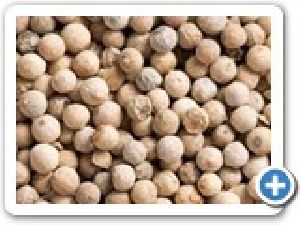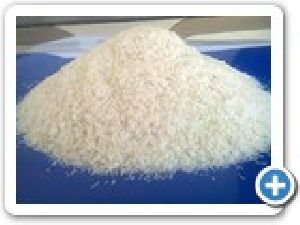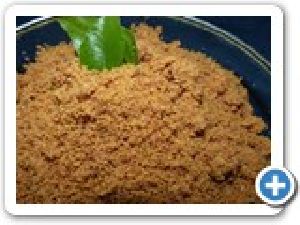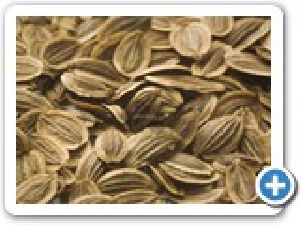
White Pepper
White pepper consists of the seed only, with the skin of the fruit removed. This is usually accomplished by process known as Retting, where fully ripe berries are soaked in water for about a week, during which the flesh of the fruit softens and decomposes. Rubbing then removes what remains of the fruit, and the naked seed is dried. Alternative processes are used for removing the outer fruit from the seed, including decortications, the removal of the outer layer from black pepper from berries through mechanical, chemical or biological methods. White pepper is sometimes used in dishes like light-colored sauces or mashed potatoes, where ground black pepper would visibly stand out. There is disagreement regarding which is generally spicier. They have differing flavor due to the presence of certain compounds in the outer fruit layer of the berry that are not found in the seed. The main reason most cooks use white pepper is to maintain consistent color in light foods. Black specks in a perfectly prepared creamy white sauce are considered distracting. White pepper are also used in marinades or added to pickling spice. Harvesting Season: October � February Muntok Sarawak Brazilian Indian Variety: Cracked, Coarse Ground, Ground, Fine Ground
...more
Turmeric
Turmeric, the dried rhizome of a herbaceous perennial, is indigenous to Southeast Asia. The primary rhizomes, round in shape are called 'bulbs', while the thin, long secondary rhizomes are 'fingers'. After harvest, the rhizomes are cleaned, boiled, dried and polished. Turmeric is closely related to ginger and is sometimes called Indian saffron due to its brilliant yellow color. The propagation of turmeric is by rhizomes. Turmeric is characterized with a fragrant, peppery aroma. It is slightly bitter in taste with a musky flavor. In Ayurvedic practices, turmeric has many medicinal properties and many in South Asia use it as a readily available antiseptic for cuts, burns and bruises. It is also used as an antibacterial agent. In medieval Europe, turmeric became known as Indian Saffron, since it was widely used as an alternative to the far more expensive saffron spice. Erode, a city in the south Indian state of Tamil Nadu, is the world's largest producer and most important trading center of turmeric in Asia. For these reasons, Erode in history is also known as "Yellow City" or "Turmeric City". Turmeric contains up to 5% essential oil and up to 5.5% curcumin, poly phenol (pH indicator). In turmeric most important for the aroma are Turmerone, turmerone, Zingiberene. Conjugated Diarylheptanoids are responsible for the orange colour and probably for the mild spicy taste. Harvest Season : February - April Madras / Erode Turmeric Alleppey Turmeric Nizamabad Turmeric Vietnam Turmeric Variety: Turmeric Fingers, Ground Turmeric, Oleoresin & Turmeric Oil
...more
Tamarind
Botanical name: Tamarindus indica Deliciously tangy and one of the most highly prized natural foods in South Asia, the tamarind � the melodic name of which comes from the Persian "tamar-I-hind," meaning "date of India" � is gaining recognition and appreciation throughout the world. Said to be native to Africa, this exotic fruit grows on exceptionally tall trees of the fabaceae family, such as peas, beans, and other legumes, mostly in the warmer, dryer areas of Asia, Mexico, and India. It's a condiment. It's a spice. No, it's a bean. The "Manila sweet," as the tamarind is sometimes called, is all of the above. Tamarind seed extract, which is deliciously tangy, is one of the most highly prized foods in Asian and Indian cuisine. Each 100 grams of tamarind contain impressive amounts of essential nutrients, including 36% of the daily recommended value in thiamin, 35% in iron, 23% in magnesium, and 16% in phosphorus. Other prominent benefits include niacin, calcium, vitamin C, copper, fiber, and pyridoxine, proving it to be a uniquely beneficial food. Traditional uses for tamarind include relief from stomach and digestive ailments, fevers, sore throat, rheumatism, inflammation, and sunstroke. Dozens of tamarind recipes, from simple to complex, are available on the internet for those desiring a fresh, unique culinary opportunity. An easy one is tamarind water, used in many Indian and Asian dishes: Just soak prepackaged tamarind paste in water, strain it, and add as part of your liquid requirements to stir fries, sauces, or curries.
...more
Star Anish
Star anise is the dried, star shaped fruit of Illicium verum. Uses Star anise is one of the signature flavours of Chinese savory cooking. The five-spice powder mix common in China contains star anise. It is used to flavour vegetables, meat, and to marinate meat. It is used as a condiment for flavouring curries, confectionaries, spirits, and for pickling. It is also used in perfumery. The essential oil of star anise is used to flavour soft drinks, bakery products and liquors. The fruit is anti-bacterial, carminative, diuretic and stomachic. It is considered useful in flatulence and spasmodic.
...more
Sesame Seeds
Sesame (Sesamum indicum)is a flowering plant in the genus Sesamum. Numerous wild relatives occur in Africa and a smaller number in India. It is widely naturalized in tropical regions around the world and is cultivated for its edible seeds, which grow in pods. The flowers of the sesame seed plant are yellow, though they can vary in colour with some being blue or purple. Records say that sesame was first domesticated in India, citing morphological and cytogenetic affinities between domesticated sesame and the south Indian native. Sesame is grown primarily for its oil-rich seeds, which come in a variety of colors, from cream-white to charcoal-black. The small sesame seed is used whole in cooking for its rich nutty flavour, and also yields sesame oil. Sesame seeds are sometimes added to breads, including bagels and the tops of hamburger buns. Sesame seeds may be baked into crackers, often in the form of sticks. Sesame seeds are also sprinkled onto some sushi style foods. Whole White Sesame seeds Whole Black sesame seeds Brown Sesame seeds Harvest Season : March - May.
...more
Red Chillies
An indispensable culinary spice, it comes in various shapes and colors. Chilli is the dried fruit of an annual sub-herb. It is also called as capsicum, paprika, sweet pepper, red pepper, pimento, cayenne pepper etc depending upon the manner in which it is prepared and used. Chilli comes in a wide range of shapes, sizes, color and degrees of pungency. Some varieties of chilli are highly pungent, medium pungent, others flavorsome but not pungent. Chilli is propagates by Seeds. Chilli was introduced in India by the great Portuguese explorer Vasco-da-Gama. The spice chilli blended well in Indian cooking. Chilli became extremely popular in India. The climate in India was favorable to cultivate chillies and soon many varieties of chilli were available in India. Places like Andhra Pradesh, Tamil Nadu, Gujarat, and Kashmir became famous for different varieties in chilli. The highly pungent "Sannam" & the mildly pungent 'mundu' chilies are internationally popular varieties. India also offers 'gospurea chilli�. Byadgi chillis are known for its high colour value. OneWorld Corporation has a well experienced chilli procurement team stationed at Guntur, Andhra Pradesh which is the largest chilli market in Asia. We have well-framed backward integrated farm contracts for IPM (PCP-Pesticide Control Program) chillies and organic chilli cultivation. Chilli is one of the spices used most in garnishing dishes. Chilli is an indispensable spice used as basic ingredient in everyday cuisine all over the world. The chilli powder is made by crushing the dried chilli having chilli flakes and chilli pods. The pungency of the chill is measure in Scoville scale. The hotness of the chilli is because the capsaicin present actually in the inner membrane placenta of the chilli and not in the chilli pods and chilli flakes as commonly believed. There are more than 400 varieties of chilli available all over the world. They differ in pungency, size, shape and colors. Chilli found its way in ayurveda, the traditional Indian medical system .According to ayurveda, chilli has many medicinal properties such as stimulating good digestion and endorphins, a natural pain killer to relieve pains. Harvesting Season : January � August Variety: Whole Red chilli Crushed Red Chilli Ground Red chilli Oils & Oleoresins
...more
Psyllium Husk
Common Names of Psyllium : Flea, lspaghua, Spogel, Plantago Psyllium, Isaphgol, Plantago sp., Isabgula, Plantaginis Ovatae Testa Botanical Names of Psyllium : Plantago Ovata, Plantago Ispaghula Psyllium Other Name: Psyllii semen, Blond Psyllium, Cleansing Plaintain, Natural dietary Fiber, Herbal supplement, Fiber - blend, Laxative, Nutrition- Herbs, Feed Supplement, Pale Psyllium. The husk of Psyllium is the actual coating of mucilage around the seed. It is considered pure dietary fiber and is the only part of the plant used in manufacturing Psyllium products. Its nutritional value consists mainly of glycosides, proteins, polysaccharides, vitamin B1, and choline. Fiber content of over 80% compared to less than 15% for oat bran and 10% for wheat bran. The husk is composed mostly of a fiber called hemicellulose which is a complex carbohydrate found in whole grains, fruits and vegetables. Hemicellulose is undigestible, however, it is partially broken down in the colon and feeds the friendly intestinal flora.
...more
Peanut Butter
Crunchy (Chunky) Peanut Butter is made from roasted peanuts blended with sugar, salt and fully hydrogenated soybean or rapeseed & cotton seeds or palm oil. Crunchy (chunky) peanut butter mean roasted peanut granules are added into creamy peanut butter. It contains a good amount of calorie and protein. It gives crunchy Taste of butter in mouth. It is mainly used for bread spread, having variety of uses. Crunchy is the ultimate peanut butter taste experience when you are looking for that extra crunch. Chunk has loads of real peanut pieces blended into every jar of great tasting peanut butter. There�s nothing closure to true peanut taste than this!
...more
Mustard Seeds
Mustard seeds of the various mustard plants are among the smallest of seeds. The seeds are about 3mm in diameter, and may be colored from yellowish white to black. They are important spices in many regional cuisines. The seeds can come from three different plants: black mustard (Brassica nigra), brown Indian mustard (B. juncea), and white mustard (B. hirta/Sinapis alba). Mustard seeds generally take 3-10 days to germinate if placed under the proper conditions, which include a cold atmosphere and relatively moist soil. Mature mustard plants grow into shrubs. Mustard seeds can be traced to different areas of Europe and Asia with the white variety originating in the eastern Mediterranean regions, the brown from the foothills of the Himalayan Mountains, and the black from the Middle East. Mustard seeds are mentioned in ancient Sanskrit writings dating back about 5,000 years ago. They are also mentioned in the New Testament in which the kingdom of Heaven is compared to a grain of mustard seed. Mustard seeds also qualify as a very good source of omega-3 fatty acids as well as a good source of iron, calcium, zinc, manganese, magnesium, protein, niacin and dietary fiber. Black Brown Yellow mustard Harvest Season : March - May Variety: Whole & ground
...more
Mango Pulp
Mango Pulp is prepared from selected varieties of Fresh Mango Fruit. Fully matured Mangoes are harvested, quickly transported to the fruit processing plant, inspected and washed. Selected high quality fruits go to the controlled ripening chambers; Fully Ripened Mango fruits are then washed, blanched, pulped, deseeded, centrifuged, homogenized, concentrated when required, thermally processed and aseptically filled maintaining sterility. The preparation process includes cutting, de-stoning, refining and packing. In case of aseptic product the pulp is sterilized and packed in aseptic bags. The refined pulp is also packed in cans, hermetically sealed and retorted. Frozen pulp is pasteurized and deep-frozen in plate freezers. The process ensures that the natural flavour and aroma of the fruit is retained in the final product. Mango Pulp/Concentrate is perfectly suited for conversion to juices, nectars, drinks, jams, fruit cheese and various other kinds of beverages. It can also be used in puddings, bakery fillings, fruit meals for children and flavours for food industry, and also to make the most delicious ice creams, yoghurt and confectionery. Varieties: Main varieties of Mango Pulp are Kesar Mango Pulp, Alphonso Mango Pulp, Totapuri Mango Pulp,Hapus Mango Pulp,Rajapuri Mango Pulp.(With Different taste with each varities) Nature of Product: Thick Sweetened Golden yellow Colour Kesar Mango Pulp, Prepared from Natural Ripe and selected Mangoes. Packaging Details: 450gm; 850gm; 3.1kg; 5.2kg - Tin canned packing, We are supplying all mango pulp(Mango Concentrate) products in a Sealed Container, with 24 Months Best Before Date. We also provide in private labeling. Ingredients:Kesar Mango Pulp, Sugar Syrup, Citric Acid Mango Pulp Uses: Used in ice-cream and juice & beverages industries as major ingredient. Used in various preparations in Hotel, catering, ceremonies, and festivals. Can be used for direct consumption.
...more
Mango Powder
Aamchur, Amchur. Description Dried mango powder is a spice made by grinding dried mango. The powder preserves the acidic, tart and spicy flavour of unripe mangoes. Preparing dried mango. Culinary Uses Mango Powder(Aamchur) is commonly used for flavouring curries, chutneys, soups, marinades and as a condiment. It enhances the taste of chicken and fish dishes. It is a souring agent like tamarind and has tenderizing qualities like lime juice. It can also be used to marinate chicken, meat, fish and pork. Mango Powder is used to flavour kebabs, seekhs , grilled chicken, baked fish and all barbecue items. It is also used to add flavour too dum aloo (potato preparation) and biryani ( rice mixed with vegetable or chicken or meat). How to store Keep dried mango powder in air-tight container, away from moisture in cool place. Health benefits Dried mango powder has high iron content, so pregnant women and people suffering from anemia are advised to consume it regularly. It combats acidity and improves digestion. It is a fair source of Vitamin A and Vitamin E which helps hormonal system function efficiently
...more
Iodized Salt
We are reckoned as the prominent Exporter of Refined Free Flow Iodized Salt from India. Refined Free Flow Iodized Salt is an essential part of our diet that provides several health benefits. Our range of Refined Free Flow Iodized Salt is of high quality and can be availed at reasonable prices. Product detail Processing Type: Raw Form: Solid Purity (%): 99.5 Color: White Packaging: Bulk, Bag, or As Per Customer Need Product Type: Salt Type: Sea Salt Specialty Free flowing No artificial additives Free from impurities Prime quality Health Benefits Prevention of goiter Enhancing of mental alertness Controls sugar level Used In Dairy products Snacks & convenience food For cooking As a Table salt Edible Salt - For Human Consumption Additives in Foodstuff For Animal Feed
...more
Green Cardamom
Cardamom of commerce is the dried ripe fruit (capsules of cardamom plant) often referred as the �Queen of Spices� because of its very pleasant aroma and taste. Cardamom is a perennial, herbaceous, rhizomatous plant. Uses The major use is for the preparation of �gahwa� � a strong cardamom coffee concoction which is a symbol for hospitality among Arabs. Apart from this cardamom is widely used as a flavouring material in whole and ground form. In Asia, it can add a lingering sparkle to every kind of dishes both traditional and modern. In Scandinavian countries it is used in baked goods and confectionaries. In Europe and North America it is an ingredient in curry powder and in some sausages products. t is used as a flavourant in dishes like Pulavu, Biriyani and meat preparations. It is an ingredient in curry powder and spice masala mixtures and is also used in Ayurvedic and Unani medicines. It has applications in flavouring cola, biscuits, liquors.
...more
Ginger
Ginger is a tuber that is consumed whole as a delicacy, medicine, or spice. It is the rhizome of the plant Zingiber officinale. It lends its name to its genus and family (Zingiberaceae). Ginger cultivation began in Asia and has since spread to West Africa and the Caribbean. It is sometimes called root ginger to distinguish it from other things that share the name ginger. Ginger is the underground rhizome of a plant with Lanceolote leaves and spikes of yellow flowers, borne on stems. Dried ginger is obtained by peeling off the outer skin of the rhizome and drying in the sun after cleaning. Bleached ginger is obtained by coating the dried ginger with a solution of lime. The uncoated variety is called 'unbleached ginger'. Propagation of ginger is by portions of rhizome with one or two buds. The congenial climate and the rich healthy soil of Kerala help to produce the finest quality ginger in the world called the �Cochin Ginger�. Fresh Ginger is extremely important in oriental and Indian food. It is used to flavour the cooking oil before you toss everything else for stir-frying. It is considered as a restorative, stimulant and a strong flavouring agent. Ginger is reputed to cure ulcers when chewed in small doses. It amply enhances your appetite when blended with other spices. The characteristic odor and flavor of ginger is caused by a mixture of zingerone, shogaols and gingerols, volatile oils that compose one to three percent of the weight of fresh ginger.Young ginger rhizomes are juicy and fleshy with a very mild taste. Mature ginger roots are fibrous and nearly dry. Ginger produces clusters of white and pink flower buds that bloom into yellow flowers. Because of its aesthetic appeal and the adaptation of the plant to warm climates, ginger is often used as landscaping around subtropical homes. Harvest Season : February - April Cochin Ginger Calicut Ginger Nigerian Ginger Variety: Ground Ginger, Sliced Ginger, Ginger Oil & Oleoresin
...more
Fenugreek
Fenugreek is one of the oldest cultivated spice in the world. Fenugreek is the ripe, dried fruit of an annual leguminous herb, which grows upto 30-60 cms in height and produces horn-shaped pods. Each pod contains 10-12 small seeds, each about 3 mm long. These vary in colour from olive green to yellow-brown and shapes ranging from square to oblong. When the seeds are ripe, the plants are pulled up and dried. The seeds are then threshed and dried further. Fenugreek has strong, pleasant and quite peculiar odour. Its aromatic smell dominates curry powder. The cuboid yellow to amber coloured fenugreek seed, commonly called methi, is frequently used in the preparation of pickles, curry powders, and pastes, and is often encountered in the cuisine of the Indian subcontinent. The young leaves and sprouts of fenugreek are eaten as greens, and the fresh or dried leaves are used to flavour other dishes. The dried leaves (called kasturi methi) have a bitter taste and a strong characteristic smell. Fenugreek seeds are a rich source of the polysaccharide galactomannan. They are also a source of saponins such as diosgenin, yamogenin, gitogenin, tigogenin, and neotigogens. Other bioactive constituents of fenugreek include mucilage, volatile oils, and alkaloids such as choline and trigonelline. Thus, it finds its way into many traditional & medicinal fields. Harvest Season : February - April Variety: Whole & ground
...more
dilseed
Originated in Eastern Europe, dill is a short-lived perennial herb. They are aromatic, and are used to flavor many foods. The seed is harvested by cutting the flower heads off the stalks when the seed is beginning to ripen. The seed heads are placed upside down in a paper bag and left in a warm dry place for a week. Successful cultivation requires warm to hot summers with high sunshine levels; even partial shade will reduce the yield substantially. It also prefers rich, well drained soil. Dill seed is used as a spice, with a flavor somewhat similar to caraway, but also resembling that of fresh or dried dill . Dill seeds were traditionally used to soothe the stomach after meals. And, dill oil can be extracted from the leaves, stems and seeds of the plant. Harvest Season : March - May Variety: Whole & ground
...more
Dehydrated White Onion
Size: 1mm � 3mm | Packing: KG, Packed in 2 poly bags inside, Laminated Paper Bag outside, Origin: India. We are leading Exporter, Supplier & Traders of Indian Spices, Dehydrated Onion & Garlic products, Dehydrated Vegetables, Mango Pulp, Peanut Butter, Ready to eat Food & Snacks, Fresh Fruit & Vegetables, and Free Flow Iodized Edible Salt for Cooking.
...more
Dehydrated Red Onions
Size: 8mm-16mm | Packing:14 KG, Packed in 2 poly bags inside, Laminated Paper Bag out side Origin: India We are leading Exporter, Supplier & Traders of Indian Spices, Dehydrated Onion & Garlic products, Dehydrated Vegetables, Mango Pulp, Peanut Butter, Ready to eat Food & Snacks, Fresh Fruit & Vegetables, and Free Flow Iodized Edible Salt for Cooking.
...more
Dehydrated Green Pepper
Pepper is one of the oldest and best-known spices in the world. Indigenous to India pepper is popularly known as the King of Spices. From time immemorial, India has always reigned supreme in the production & export of this most exotic and renowned spice in the world. Pepper plant is a perennial climber with dark green leaves and spikes of white flowers. The peppercorn is a berry like drupe, about � cm in diameter, green when unripe and then red. Black pepper comes from whole fruit, picked just before they are completely ripe and dried. It is ideal for planting in the ground as well as in a container. Peppercorns are very strong in aroma and taste and can be stored for many years without losing its flavor. It is commonly used in all dishes as a very popular spice and in canned foods as a flavoring agent. It has medicinal properties for fighting colds, flu and infections, to energize, increase circulation, to warm and relieve muscle aches and stiffness etc.
...more
Curry Leaves
Botanical name: Murraya koenigii (L.) SprengelFamily name: Rutaceae Commercial part: Leaf Kadi Patta, Kadipatta, Karivepallai, Sweet Neem leaves A native Indian plant; these leaves are highly aromatic. They grow from a sub tropical and tropical tree called a Neeme tree, they are commonly referred to as Kari Bevu , which translated means �Black Neem�. They are commonly used in seasoning food in Sri Lanka and India. These leaves when fresh have a very short shelf life; they may be stored in the freezer for up to one week. They are also available dried. This fresh curry leaf has the similar aroma of a tangerine. These leaves can be eaten without any harm to humans. They are widely used in vegetarian dishes in India, and will seldom be found in non vegetarian dishes. Description A native Indian plant; these leaves are highly aromatic. �. They are commonly used in seasoning food in Sri Lanka and India. These leaves when fresh have a very short shelf life; they may be stored in the freezer for up to one week. They are also available dried. This fresh curry leaf has the similar aroma of a tangerine. These leaves can be eaten without any harm to humans. They are widely used in vegetarian dishes in India, and will also be found in non vegetarian dishes.Curry leaves adding a very distinct flavor and aroma to an assortment of dishes.Apart from being widely used in medicines,it is widely used in Many cuisines.The green mid-sized leaves are joined to main stem and have a faint aroma which can be experienced while cooking. Culinary Uses They are primarily used in Indian cuisine to temper recipes. Use torn curry leaves or whole as a tempering agent for Veg & Non-Veg Iteams etc. Use chopped curry leaves along with green chillies and ginger to flavour Dishes. Dry roast curry leaves and combine with dried red chillies, asafoetida and urad dal to make spicy chutneys and powders which should be had with sesame oil and steamed rice. Health Benefits Curry leaves have antioxidant, antimicrobial and anti inflammatory properties and is thus used widely in Ayurvedic medicines. It aids digestion and thus one can chew curry leaves when having a tummy ache. It is especially good for preventing diarrhea. Scientific research has proven that inclusion of curry leaves is beneficial for people with diabetes. Curry leaves taken with black pepper on an empty stomach can reduce blood sugar levels. It helps in skin care too. Intake of curry leaves can promote clear and healthy skin. They are a fair source of Vitamin A and calcium.
...more
Cumin
Cumin is the dried seed of the herb Cuminum cyminum, a member of the parsley family. Today, cumin is the second most popular spice in the world after black pepper. Cumin seeds are used as a spice for their distinctive aroma. Cumin's distinctive flavour and strong, warm aroma is due to its essential oil content. It is a small herbaceous plant, cultivated for its dried fruits. At maturity the seeds are approximately 6 mm long, oval shaped, with pale green to yellow brown color. When the leaves with the seeds turn brown, the dried plants are collected, threshed, and seeds separated by winnowing. Cumin has an intensely strong and slightly bitter flavor. Cumin is native to Egypt and has been cultivated in the Middle East, India, China and Mediterranean countries for millennia. Throughout history, cumin has played an important role as a food and medicine and has been a cultural symbol with varied attributes. Cumin was mentioned in the Bible not only as a seasoning for soup and bread, but also as a currency used to pay to the priests. In ancient Egypt, cumin was not only used as a culinary spice, it was also an ingredient used to mummify pharaohs. Cumin seeds were highly honored as a culinary seasoning in both ancient Greek and Roman kitchens. Cumin's popularity was partly due to the fact that its peppery flavor made it a viable replacement for black pepper, which was very expensive and hard to come by. Cumin was also noted for both its medicinal and cosmetic properties. Harvest Season : March - April Indian cumin Syrian cumin Egyptian cumin Variety: Whole & ground
...more
Coriander
Coriander is the dried fruit of an annual herb, with several branches and serrated leaves. The small flowers yield green globular fruits, which turn yellowish brown when ripe. The seeds are picked when the ripening is in progress and sun-dried. Coriander is pleasantly aromatic and flavorful. This fragrant spice is used for sauces and as a condiment. The fresh young leaves of this herb is used to flavour and garnish soups,salads and meat dishes. Coriander is common in Middle Eastern, Central Asian, Mediterranean, Indian, South Asian, Mexican, Texan, Latin American, Chinese, African and Southeast Asian cuisine. The dry fruits are known as coriander seeds or coriandi seeds. The word coriander in food preparation may refer solely to these seeds (as a spice), rather than to the plant itself. The seeds have a lemony citrus flavour when crushed, due to terpenes linalool and pinene. It is described as warm, nutty, spicy, and orange-flavored. It is commonly found both as whole dried seeds and in ground form. Seeds can be roasted or heated on a dry pan briefly before grinding to enhance and alter the aroma. Ground coriander seed loses flavor quickly in storage and is best ground fresh. Coriander seed is a spice ,in garam masala and Indian curries, which often employ the ground fruits in generous amounts together with cumin. It acts as a thickener. Harvest Season : March - April Variety: Whole & ground forms
...more
Cinnamon
Grades: Different species: 'Cassia China', Batavia Cassia', 'Java Cassia or Cassia Vera', 'Saigon Cassia' Through botanically closely related to Cinnamon ,Cassia is considered inferior to cinnamon. Cassia is the dried bark of a small, bushy, evergreen tree. It is characterised by a sweet, pungent aroma. There are different varieties of cassia obtained from different species of Cinnamomum and originating from different sources. Through they share a general likeness in aromatic properties, they also exhibit differences in some other aspects. Cassia is cultivated in sandy soil as a shrub. It is grown along the ever green tract of the Western Ghats and the North-Eastern States of India, which form the major producing regions of Indian cassia. Whole Cinnamon stick Broken Cinnamon/ Cinnamon Splits Fine Ground Cinnamon Harvesting Season: June - July
...more
Celery
Actually very small fruit, these "seeds" yield a valuable volatile oil used in the perfume and pharmaceutical industries. They also contain an organic compound called apiol. Actually very small fruit, these "seeds" yield a valuable volatile oil used in the perfume and pharmaceutical industries. Celery seeds can be used as flavouring or spice, either as whole seeds or ground and mixed with salt, as celery salt. Celery salt can also be made from an extract of the roots. Celery salt is used as a seasoning, in cocktails. Celery is valuable in weight-loss diets, where it provides low-calorie dietary fiber bulk. Celery contains androstenone. There is a common belief that celery, being difficult for humans to digest, has negative caloric content because human digestion burns more calories than can be extracted from it. Celery seeds are also a great source of calcium, and are regarded as a good alternative to animal products. Harvest Season : May Variety: Whole & ground
...more
Fresh Fruits and Vegetables
Be first to Rate
Rate ThisOpening Hours